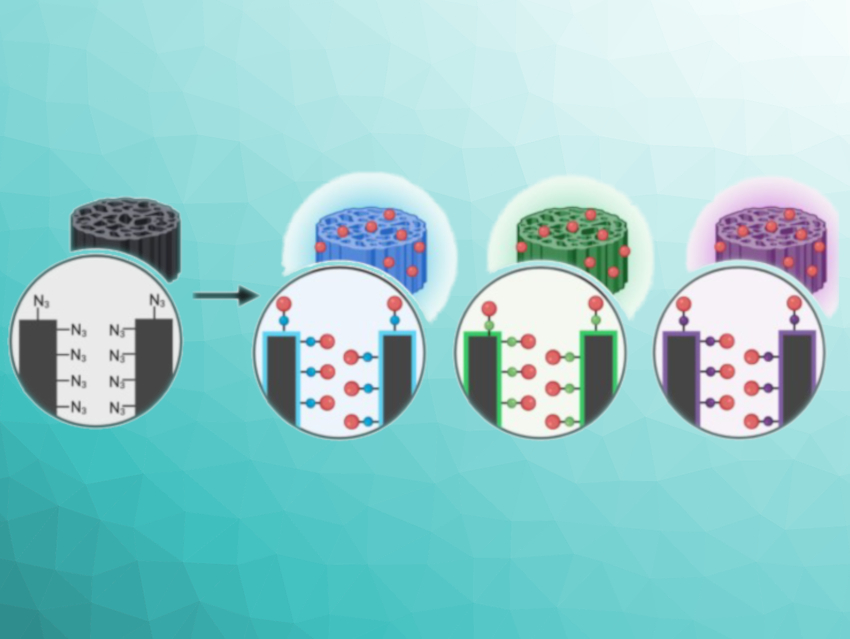Nanomaterials can be used to carry and deliver anticancer drugs. Porous silicon nanoparticles (pSiNPs), for example, can be fabricated from silicon wafers using an HF solution. They are readily degraded into nontoxic orthosilicic acid, which makes them promising for drug-delivery applications. Stimulus-responsive drug release from pSiNPs, e.g., in response to light or a change in pH could be particularly useful.
Nicolas Voelcker, Northwestern Polytechnical University (NPU), Xi’an, China, Monash University, Parkville, Australia, Commonwealth Scientific and Industrial Research Organisation (CSIRO) and Melbourne Centre for Nanofabrication, Clayton, Australia, Bo Peng, Northwestern Polytechnical University (NPU) and Monash University, Lin Li, Northwestern Polytechnical University (NPU), and colleagues have synthesized three different drug conjugates based on pSiNPs carrying the anticancer drug doxorubicin (DOX), using different stimulus-cleavable linkers: a photo-cleavable linker (ortho-nitrobenzyl), a pH-cleavable linker (hydrazone), and an enzyme-cleavable linker (β-glucuronide). The drug-loaded linkers were covalently attached to the pSiNPs using a copper(I)-catalyzed click reaction (pictured above).
The team found that this covalent connection allowed for a high drug loading of DOX on the nanoparticles (up to ca. 250 μg of DOX per mg of pSiNPs) and a controlled release. Light can be used as an external trigger for drug release, while an acidic pH or higher levels of the enzyme β-glucuronidase, which can occur in the environment of tumors, are endogenous triggers. All three systems showed good inhibition of cancer growth in both cell cultures and mouse tumor models.
- Porous silicon nanocarriers with stimulus‐cleavable linkers for effective cancer therapy,
Yufei Xue, Hua Bai, Bo Peng, Terence Tieu, Jiamin Jiang, Shiping Hao, Panpan Li, Mark Richardson, Jonathan Baell, Helmut Thissen, Anna Cifuentes, Lin Li, Nicolas Voelcker,
Adv. Healthcare Mater. 2022.
https://doi.org/10.1002/adhm.202200076




